War is bad and animals are dying: Fiona Hall at Heide Museum
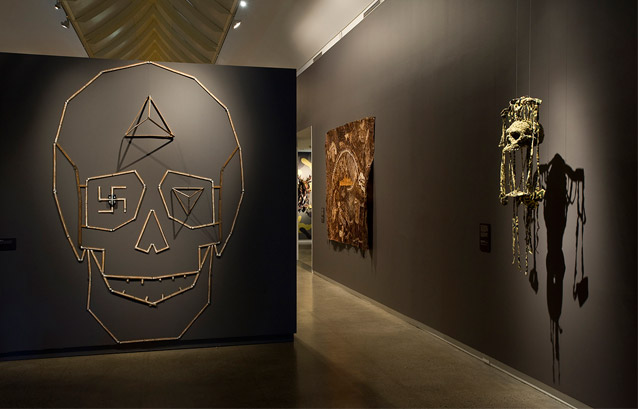
When you visit a museum in Australia, you have to consider the snake danger.
According to the Australian mentality, which is close to Hinduism in this sense, you shouldn’t kill any snake – after all a snake is still part of the wildlife and you have to respect it.
Anyways, being aware of the snake danger, I decided to go to the Heide Museum equipped with my Crocodile Dundee hat.
I hoped that my Indonesian boyfriend Lucas would have bring with him a kris and my Japanese friend Minako a katana but, alas, they didn’t.
“What about you? Didn’t you bring a mandolino with you?” Lucas asked me referring to my Neapolitan origins.
“How you supposed to kill a snake with a mandolino, genius?”
“Unless…” I mumbled making my way through the lianas separating us from the museum “you charm the snake playing Torna a Surriento or something like that.”
Walking carefully, we finally arrived at the door of the Heide Museum without being bitten, which was good.
The current show was titled “Fiona Hall: Big game hunting”
Coming into the exhibition I took off my hat and I rapidly switched my attitude from adventurer to art critic.
Apparently Fiona is one of Australia’s most prominent contemporary artists, or at least that was what the board at the entrance said:”Her extraordinary works transforms commonplace materials into vital organic forms with both contemporary and historical resonances. This trans-disciplinary survey exhibition highlights her recent practice and her continuing focus on the political interface between nature and culture.”
My friends and I started wandering in the rooms of the exhibition trying to find out about that extraordinariness.
In the first room there were some huge drawings in earthy colours. The theme was the whale hunting in New Zealand.
In another room of the Heide Museum the kitsch aspect of the installation, voluntary or not, prevailed on the social content. Camouflages miniatures of monument from all over the world were in the middle of the camouflage room.
Action figures painted in yellow and black stripes like bees were flying on top of the miniatures, while on the wall flags of countries involved in wars were painted.
There was something like a metaphor of an hive going on but too many symbols blurred the message.
I joined Minako in the third room, with some camouflage installations hanging from the black and walls like hunting trophies or stuffed animals.
Each one of the installations was the reconstruction on an endangered animal made out of a torn military jacket. The animals smiled at you with dice tooth and ogled at you with coin eyes.
Each art piece had multiple symbols in it, up to the point where it became crammed with references: endangered animals + a particular war or issue + multiple symbols from the place where this issue had place.
Minako spotted me one artwork that was about Japanese army, using a camouflage Iriomote cat with the Japanese rising sun in the eyes.
The cat, obliviously endangered, had Hello Kitty sticks in his hands (read capitalism) and was eating a white puppet with dangling red stripes springing from the rising sun on his head.
Some knotted old yens were stick to the fabric structure under the cat.
As Minako explained me, to knot paper messages and hang them is symbol of good luck in Japan. But knotting ancient money was certainly symbol of the long-standing corruption of the Japanese military.
I usually like the artworks that you have to slowly discover. Multiple layers keep the interest turned on and gives the viewer the possibility to find always new meanings in the artwork.
In Fiona Hall though you can find a problem that persist in a lot of contemporary art with social content.
Contemporary art supposed to be open, but in often social artists are forcing you to just one meaning.
They want to convey a precise message, like “Japanese army is corrupted”, but at the same time the symbols they decide to use don’t explain why.
With this kind of artists the references often became just an aesthetic disguise. When the viewer get rid of the mask, he would only find a statement: “Japanese army is corrupted”.
Fiona doesn’t explains us why the Japanese army is corrupted. The dying puppet in the fences of the endangered cat doesn’t quite sounds like a reason.
Coming out from the exhibition, I had to admit that the dark atmosphere, the themes and the camouflage excess gave me a sensation of oppression on an emotional level.
It was like sitting at a lunch table in tent with gross military just back from a slaughter – pandas as main course.
My Indonesian boyfriend, with a past working for Greenpeace, remained deeply impressed by the exhibition. On the way back to the train he was very careful to not disturb the snakes, just in case they would be endangered.
For my part, I just wore my Crocodile Dundee hat, casting out the blues that the exhibition gave me.
I can easily summarize the whole exhibition is just one line: “Animals are dying and war is bad” maybe with an extra “Camouflage is back this year” for fashionistas.
Everyone feels good when comes to social art.
The artist feels a strong sense of purpose in his work, the curators are proud to do something “engaged” in their museum, the journalist take the chance to talk about the issues that the exhibition was talking about (even if in this case there were way too many) and the visitors can tell their friends about that very serious exhibition that they have just seen at Heide Museum.
Social art is always fine to make you aware of what bad is going on, without being too specific and too proactive.
When you look at this kind of art, it sure gives you a sensation of wrongness, but after that, what are you going to do with it?
Fiona Hall has the merit of addressing a number of political and environmental issues that not necessarily everyone is happy to talk about. But then what?
Is she asking us to pick one of them randomly and fight for it?
We all understand that animals are dying and war is bad but, beyond the complaint, in Fiona Hall’s work I really can’t see the willingness to find a solution.
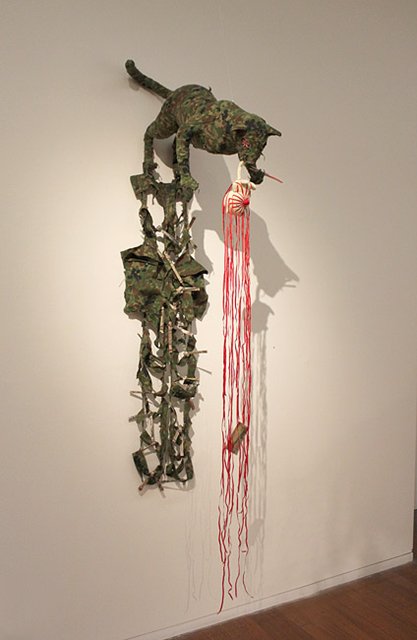
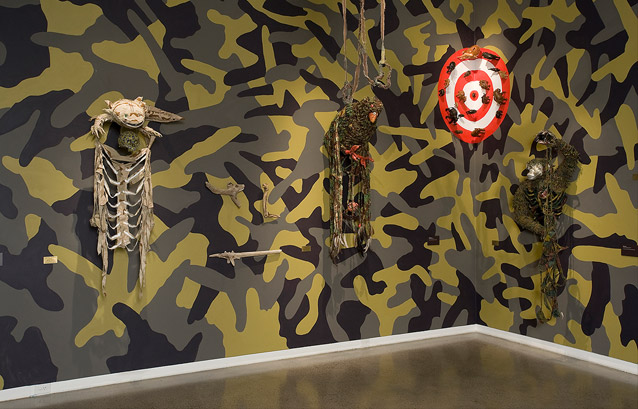
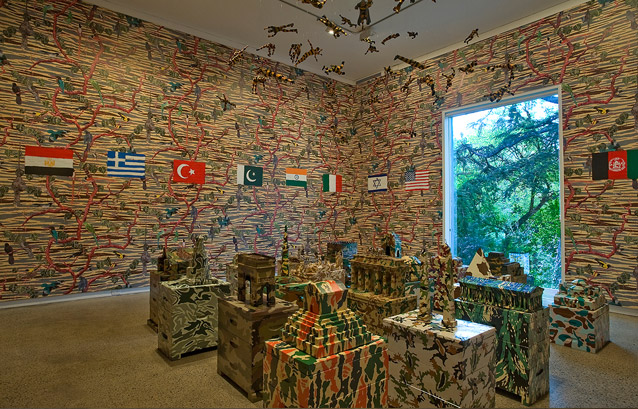
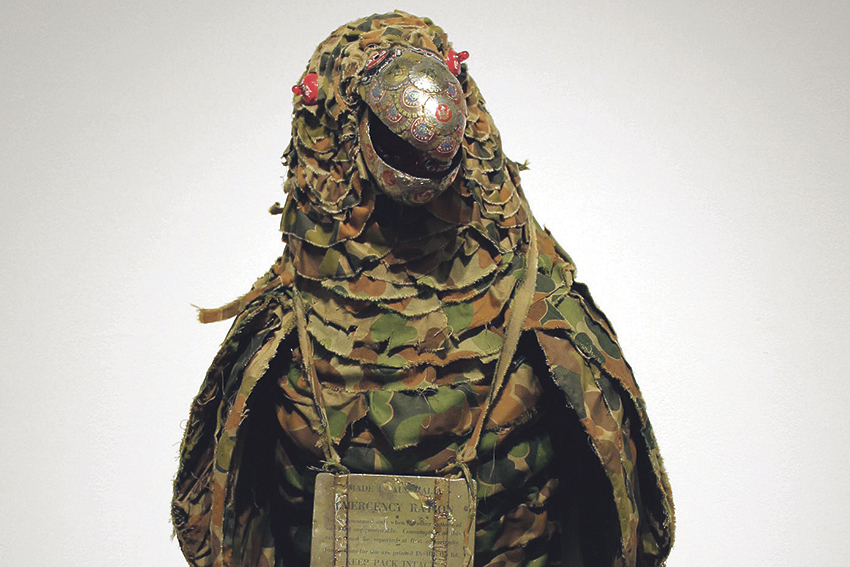
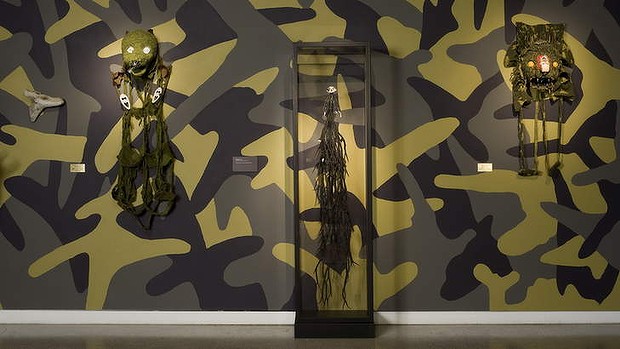
Heide Museum of Modern Art
FIONA HALL: BIG GAME HUNTING
28 MARCH – 21 JULY 2013



